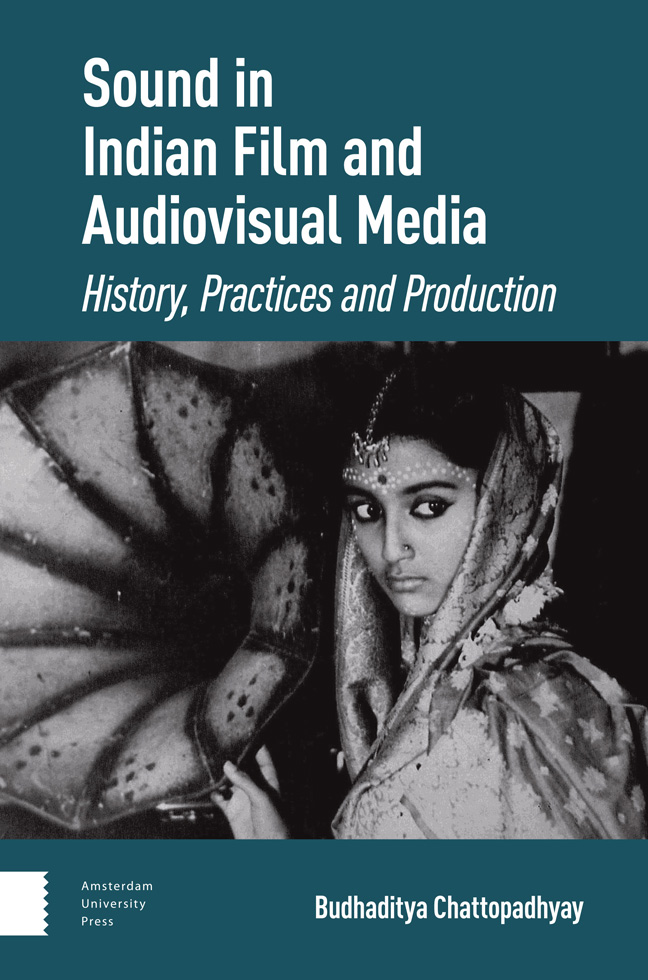Book contents
- Frontmatter
- Contents
- Acknowledgements
- 1 Introduction
- 2 The Technological Frameworks
- 3 Direct Sound and Early Talkies
- 4 Sound of the Golden Age
- 5 Tracing the Sound in Satyajit Ray’s Film-works
- 6 Popular Films from the Dubbing Era
- 7 Parallel Sounds, Radical Listening – Part I
- 8 Sholay, Stereo Sound and the Auditory Spectacle
- 9 The Advent of Digital Sync Sound
- 10 The Surround Revolution
- 11 Sound in the Audiovisual Media Arts
- 12 Parallel Sounds, Radical Listening – Part II
- 13 A Concluding Voiceover
- Bibliography
- Filmography
- Index
13 - A Concluding Voiceover
Published online by Cambridge University Press: 20 February 2024
- Frontmatter
- Contents
- Acknowledgements
- 1 Introduction
- 2 The Technological Frameworks
- 3 Direct Sound and Early Talkies
- 4 Sound of the Golden Age
- 5 Tracing the Sound in Satyajit Ray’s Film-works
- 6 Popular Films from the Dubbing Era
- 7 Parallel Sounds, Radical Listening – Part I
- 8 Sholay, Stereo Sound and the Auditory Spectacle
- 9 The Advent of Digital Sync Sound
- 10 The Surround Revolution
- 11 Sound in the Audiovisual Media Arts
- 12 Parallel Sounds, Radical Listening – Part II
- 13 A Concluding Voiceover
- Bibliography
- Filmography
- Index
Summary
Abstract: Critical listening, descriptive analysis, and informed commentaries combine in concluding remarks on the uniqueness of sound practices in India, their historical trajectories and aesthetic shifts. This final chapter locates the dominant tendencies and predilections of this diversity with a practice-aware approach. Critical and self-reflective observations from a sound practitioner’s perspective drive this creative approach, identifying several complex and intercepting threads of production trajectories in a vastly heterogeneous national cinema, loosely unified by technological and aesthetic developments. A taxonomical model based on critical observations of historical and technological shifts and emergent aesthetic strategies provides the framework.
Keywords: Indian cinema, sound studies, media arts, sound production, film and media studies
In a Nutshell
Sound has received extensive academic interest in recent years. However, much of this attention has been invested in studying sound within an American and/or European media cultural context. Sound in other global regions, for example in India, has remained underexplored. And yet India is one of the world’s largest producers of films and audiovisual media, with a formidable international presence as an emerging arts and cultural production giant. This book develops a comprehensive understanding and overview of the unique sound world of Indian film and audiovisual media to fill this void in analysis. It examines the historical developments of sound from early optical recordings to contemporary digital audio production alongside an aesthetic inquiry into mainstream, Parallel Cinema, and audiovisual art works. As a sound and media artist who studied film, I bring a practice-based methodology to these themes, incorporating extensive conversations with prominent sound practitioners and filmmakers active in India. The book locates an emerging spatial and social awareness of film and media through sound, occurring alongside or against a traditionally transcendental approach to listening. Tracing this confluence of tradition and modernity, the book makes fresh contributions to the fields of film, audiovisual media, and sound studies.
The validity of the term ‘Indian’, housing a diversity of practices from Bombay and regional cinemas, is discussed. Despite linguistic and other vernacular differences, India’s geographic unity, its common use of technology and technology transfer, and ongoing cultural exchanges within a methodological mélange suggest the term ‘Indian cinema’ is a useful, broad umbrella term.
Indian films are well known for producing transcendental sonic experiences, exemplified by the overwhelming use of non-site-based song-and-dance sequences. In this practice, the careful application and attentive organization of sounds is generally lacking from the narrative strategy.
- Type
- Chapter
- Information
- Sound in Indian Film and Audiovisual MediaHistory, Practices and Production, pp. 213 - 230Publisher: Amsterdam University PressPrint publication year: 2023



